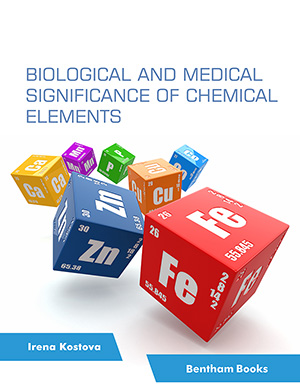Abstract
Background: The extreme toxicity of cyanide ions to living organisms encourages the researcher to develop new chemosensors for their sensitive and selective detection. Among various classes of chemosensors, chalcones are believed to be a promising candidate for designing new chemosensors for anions due to easy modification in their skeleton and conjugation system.
Research Gap and Problem Statement: Despite having various medical applications and properties, the recognition ability of chalcone derivatives is not widely explored. The traditional methods known for the sensing of cyanide ions are ion chromatography or cyanide selective electrodes. However, these methods need skilled operators and are found to be expensive and time-consuming. Also, the available methods for the detection of cyanide ions are not suitable for on-site monitoring and show interference from other competitive anions, such as fluoride, acetate, and hydroxide ions. Hence, this encouraged us to explore the chalcone derivatives as chemical sensors that are capable of detecting the cyanide ions in the presence of competitive anions, such as fluoride, acetate, and hydroxide ions.
Objectives: The development of new chalcone analogs (1E,4E)-1,5-bis(4-chlorophenyl)penta-1,4-dien-3-one (3) and (E)-3-phenyl-1-(pyridin-2-yl)prop-2-en-1-one (6), which are particularly important for the future development of chemosensors for the detection of cyanide ions in the presence of various interfering ions, such as fluoride, acetate, and hydroxide ions.
Methods: The sensing behavior of chalcone derivatives (1E,4E)-1,5-bis(4-chlorophenyl)penta-1,4-dien-3-one (3) and (E)-3-phenyl-1-(pyridin-2-yl)prop-2-en-1-one (6) have been investigated toward various anions (CN-, F-, Cl-, Br-, NO3 -, SO4 2-, PO4 2-, OH-, OAc-) using UV-vis spectroscopy. Interestingly, among various anions tested, derivatives (1E,4E)-1,5-bis(4-chlorophenyl)penta-1,4-dien-3-one (3) and (E)-3-phenyl-1-(pyridin-2- yl)prop-2-en-1-one (6) function as highly selective chemosensors for the detection of cyanide ions.
Results: We have synthesized two chalcone based derivatives (1E,4E)-1,5-bis(4-chlorophenyl)penta-1,4-dien-3- one (3) and (E)-3-phenyl-1-(pyridin-2-yl)prop-2-en-1-one (6) with simple condensation reaction for the detection of cyanide ions. The various results indicated the quick response of (1E,4E)-1,5-bis(4- chlorophenyl)penta-1,4-dien-3-one (3) and (E)-3-phenyl-1-(pyridin-2-yl)prop-2-en-1-one (6) toward cyanide anions. These two chalcone derivatives showed not only spectral change with selectivity but also showed sensitivity for the detection of cyanide anions. The developed chalcone derivatives detect cyanide ions in the presence of various interfering ions, such as fluoride, acetate, and hydroxide ions. The chemosensors (1E,4E)- 1,5-bis(4-chlorophenyl)penta-1,4-dien-3-one (3) and (E)-3-phenyl-1-(pyridin-2-yl)prop-2-en-1-one (6) for the detection of cyanide ions are particularly smart due to their real-time analysis, simplicity, and low cost in comparison to other closely related processes, such as fluorescence.
Conclusion: The sensitivity studies show the high reactivity of derivative 1,5-bis(4-chlorophenyl)penta-1,4- dien-3-one (3) as compared to (E)-3-phenyl-1-(pyridin-2-yl)prop-2-en-1-one (6). The detection limit for derivatives (1E,4E)-1,5-bis(4-chlorophenyl)penta-1,4-dien-3-one (3) and (E)-3-phenyl-1-(pyridin-2-yl)prop-2- en-1-one (6) was 1.2 μM and 300 μM, respectively. The results of (1E,4E)-1,5-bis(4-chlorophenyl)penta-1,4- dien-3-one (3) and (E)-3-phenyl-1-(pyridin-2-yl)prop-2-en-1-one (6) for cyanide detection were satisfying, suggesting their potential application for cyanide detection.
Future Direction: The goal of further research of this field is to develop water-soluble chalcone-based probes, which show emission in the Near Infra-Red (NIR) region to provide favorable conditions for biological applications.
Keywords: Chalcone, cyanide, chemosensor, photophysical, UV-vis, michael reaction.
[http://dx.doi.org/10.1016/j.snb.2014.07.109]
[http://dx.doi.org/10.1007/s10895-011-0942-z] [PMID: 21837384]
[http://dx.doi.org/10.1016/j.snb.2015.01.111]
[http://dx.doi.org/10.1016/j.tet.2011.09.003]
[http://dx.doi.org/10.1021/ol800197t] [PMID: 18336033]
[http://dx.doi.org/10.1016/j.snb.2009.07.020]
[http://dx.doi.org/10.1021/acs.chemrev.6b00021] [PMID: 27078087]
[http://dx.doi.org/10.3389/fchem.2020.00414] [PMID: 32548089]
[http://dx.doi.org/10.1016/j.trac.2017.08.003]
[http://dx.doi.org/10.1007/s13738-019-01851-8]
[http://dx.doi.org/10.1007/s13738-020-01998-9]
[http://dx.doi.org/10.1039/c4cs00008k] [PMID: 24668230]
[http://dx.doi.org/10.1002/ejoc.201900369]
[http://dx.doi.org/10.1016/j.saa.2018.07.071] [PMID: 30064116]
[http://dx.doi.org/10.1039/B907368J] [PMID: 20023843]
[http://dx.doi.org/10.1126/science.287.5459.1737] [PMID: 10755922]
[http://dx.doi.org/10.1016/j.jfca.2004.04.002]
[http://dx.doi.org/10.1039/C6NJ03794A]
[http://dx.doi.org/10.1039/C5CC01280E] [PMID: 25873106]
[http://dx.doi.org/10.1016/j.tetlet.2016.05.028]
[http://dx.doi.org/10.1016/j.snb.2014.04.005]
[http://dx.doi.org/10.1039/c0an00932f] [PMID: 21373670]
[http://dx.doi.org/10.1039/c3cc44056g] [PMID: 23884287]
[http://dx.doi.org/10.1039/C5AY01033K]
[http://dx.doi.org/10.1039/C4RA17199C]
[http://dx.doi.org/10.22146/ijc.21181]
[http://dx.doi.org/10.1007/s10895-016-1938-5] [PMID: 27679994]
[http://dx.doi.org/10.1039/D0AY01603A] [PMID: 33103673]
[http://dx.doi.org/10.1007/s11418-011-0568-0] [PMID: 21830091]
[http://dx.doi.org/10.1021/ol8016929] [PMID: 18722459]
[http://dx.doi.org/10.1039/C5NJ00169B]
[http://dx.doi.org/10.1016/j.tetlet.2014.09.049]
[http://dx.doi.org/10.1039/C6NJ01832G]
[http://dx.doi.org/10.1039/C1OB06242E] [PMID: 22101917]
[http://dx.doi.org/10.1021/ic300217v] [PMID: 22716094]
[http://dx.doi.org/10.1039/C5CC07903A] [PMID: 26568259]
[http://dx.doi.org/10.1016/j.tet.2012.01.026]
[http://dx.doi.org/10.1021/ol900376r] [PMID: 19344183]
[http://dx.doi.org/10.1039/C6RA17354C]
[http://dx.doi.org/10.1039/C4RA12910E]
[http://dx.doi.org/10.3390/s19245458] [PMID: 31835755]
[http://dx.doi.org/10.3390/s16030271] [PMID: 26927099]
[http://dx.doi.org/10.1016/j.saa.2019.04.052] [PMID: 31051424]
[http://dx.doi.org/10.1016/j.saa.2014.11.013] [PMID: 25490042]
[http://dx.doi.org/10.1016/j.tet.2020.131479]
[http://dx.doi.org/10.1080/15421406.2011.570123]
[http://dx.doi.org/10.1002/jcc.540141112]
[http://dx.doi.org/10.1016/B978-044451719-7/50084-6]
[http://dx.doi.org/10.1039/c0cc03910a] [PMID: 21042601]
[http://dx.doi.org/10.1016/j.jphotochem.2012.06.012]






























